Ralph Fasanella, the UE organizer who took up painting and became one of the most celebrated self-taught American artists of the 20th Century, is known for his large-scale paintings of strikes, union meetings, and urban working-class life. One of his paintings of the 1912 “Bread and Roses” strike in Lawrence, Massachusetts hangs in the headquarters of the AFL-CIO, and posters of his Lawrence strike and “Organizing Committee” series adorn union halls throughout the country (including the UE National Office).
However, as a new show of his work at the Ruffed Grouse Gallery in Narrowsburg, New York makes clear, Fasanella was interested in every aspect of working class life, not just union struggles. Here we see working people at home and at the beach, vacationing, eating hot dogs at the iconic Nathan’s in Brooklyn, and enjoying America’s favorite pastime in Baseball, Holy Cow!, from 1996, one of the last years of his life. (Fasanella passed away in 1997, at the age of 83.)
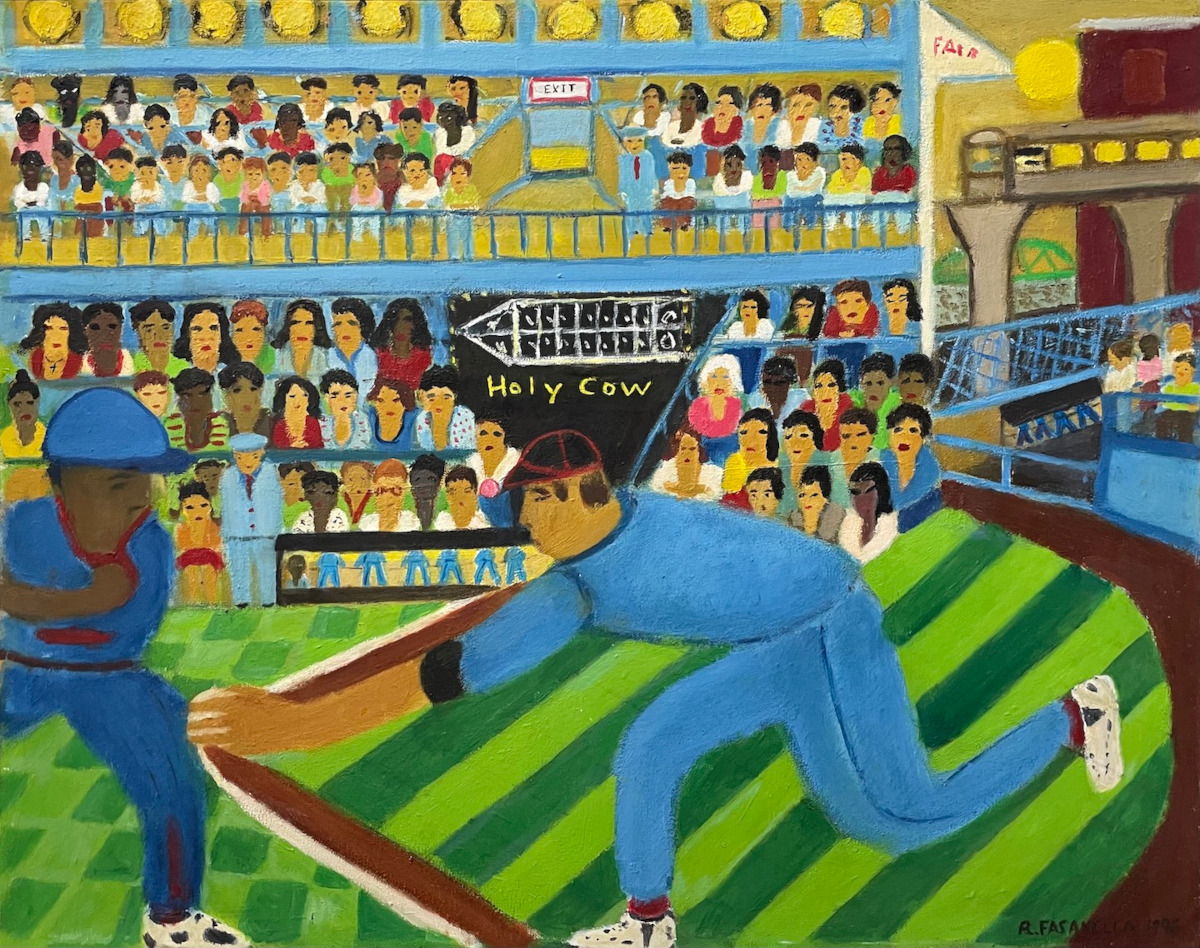
Baseball, Holy Cow!, 1996.
Many of the paintings in the show are studies of single individuals: a woman in a green sweater leaning against a chest of drawers from 1955, a man in a maroon coat seated in front of a city scene from 1960, a Black woman in a blue coat applying for jobs at a U.S. Employment Services office from 1955.
Seeing Fasanella’s sensitive characterization of his subjects in these portraits gives one a new appreciation of the care he took in painting each of the dozens (or even hundreds) of people in his larger-scale paintings. While other artists might render crowds as repeating figures, or even as an amorphous mass, Fasanella depicts each figure as a distinct individual. Their wide range of hair styles and colors, skin tone and dress reflect the diversity of the American working class, especially the working class of New York City, where Fasanella lived his whole life.
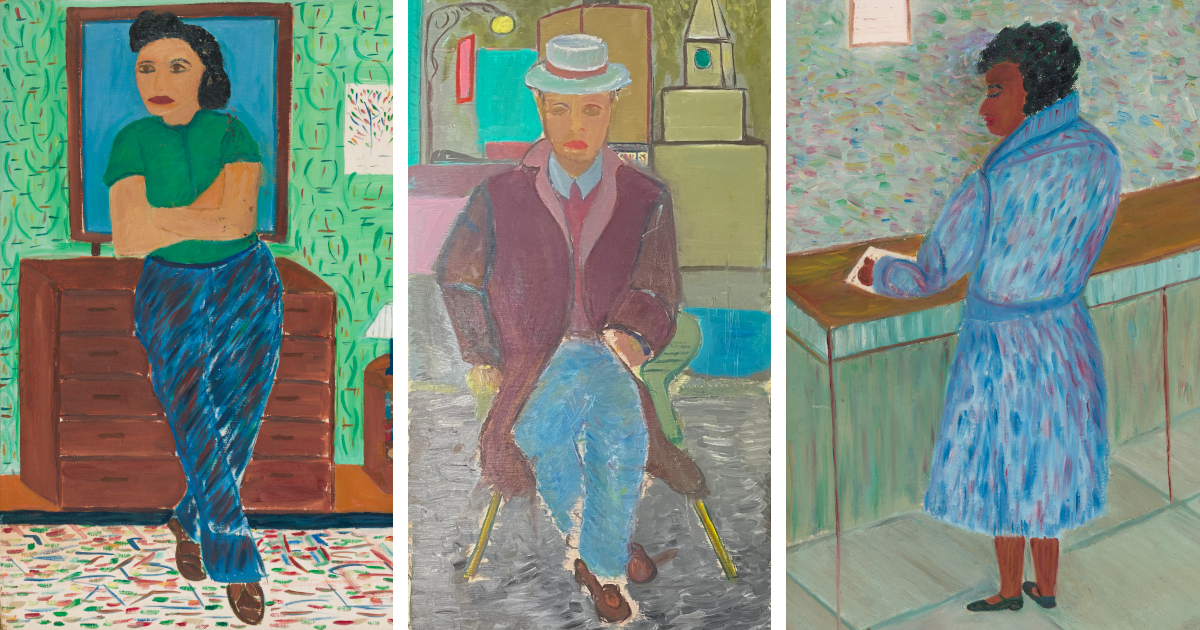
Left to right: Woman in Green Sweater, 1955; Seated Man, City Scene, c. 1960; and Applicant U.S.E.S., 1955.
One could say that Fasanella paints his subjects the way an organizer might, aware of the potential of the collectivity but always attentive to the personalities and interests of each individual worker. In fact, two paintings in the show, both painted in 1989, specifically depict organizing committees.
Organizing the Big Three is set in the heyday of the Congress of Industrial Organizations (CIO) in the 1930s or 1940s. Its title refers not to the “big three” auto companies, but to the big three mass-production industries — auto, steel, and electrical manufacturing — and the CIO unions that organized them in the 1930s: the UAW, Steelworkers, and UE. Banners on the walls read “Vote UE-CIO” and “Build a rank and file union now!” and announce a Labor Day rally with CIO President John L. Lewis, CIO Vice President Sidney Hillman, and Harry Bridges, the fiery leader of the International Longshore and Warehouse Union.
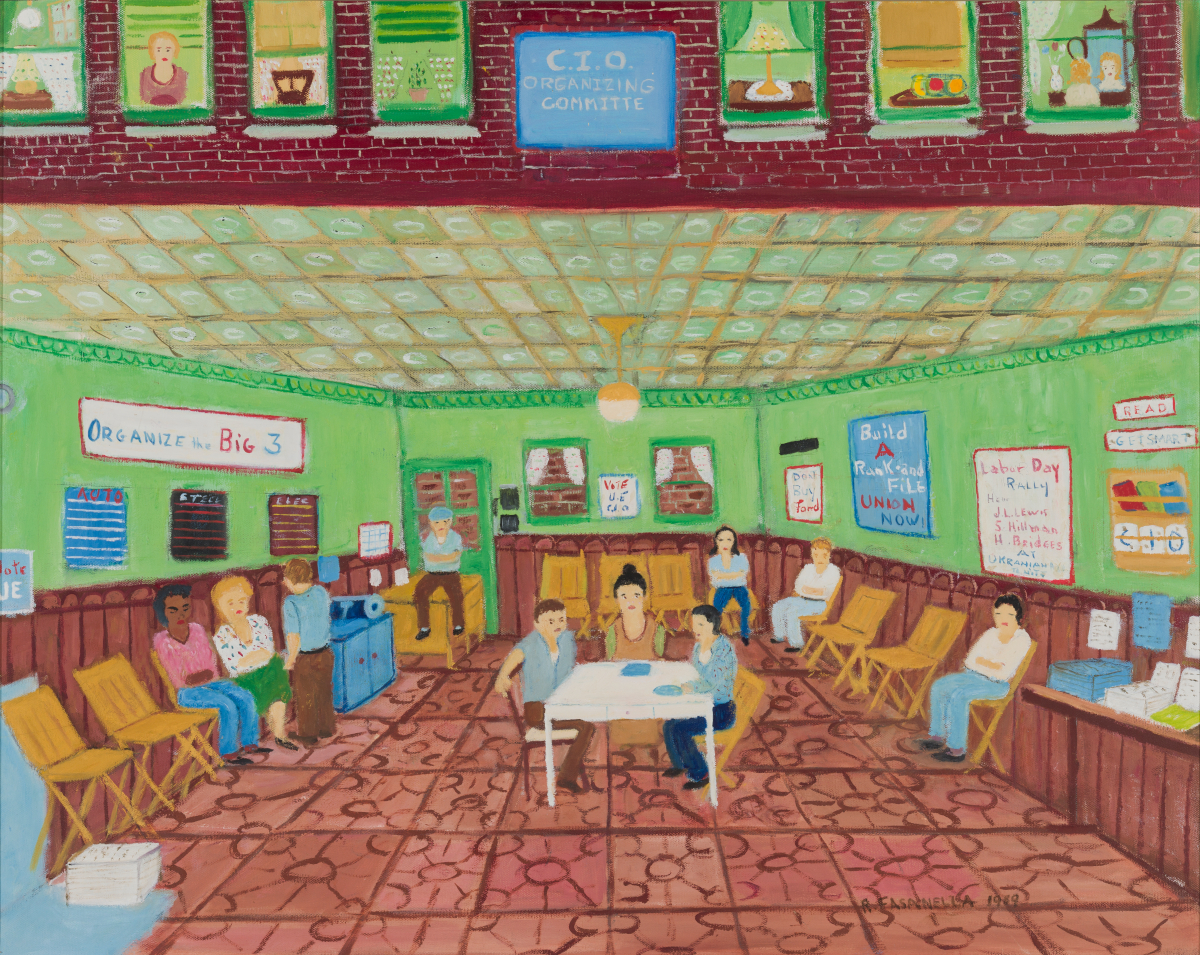
Organizing the Big Three, 1989.
Organizing Committee (Fisher Building), shown at the top of the page, is set in a more recent era, and specifically in New Bedford, Massachusetts. A poster on the wall reads “Support ERA,” referring to the Equal Rights Amendment to the constitution prohibiting sex discrimination, which UE actively supported in the 1970s and 80s. The chalkboard and the text of a copy of the UE NEWS on the wall both mention “Morse,” presumably a reference to Morse Cutting Tools in New Bedford, where UE Local 277 successfully used the threat of eminent domain (the city seizing property) to keep their plant open for five years after a plant-closing threat in the early 80s.
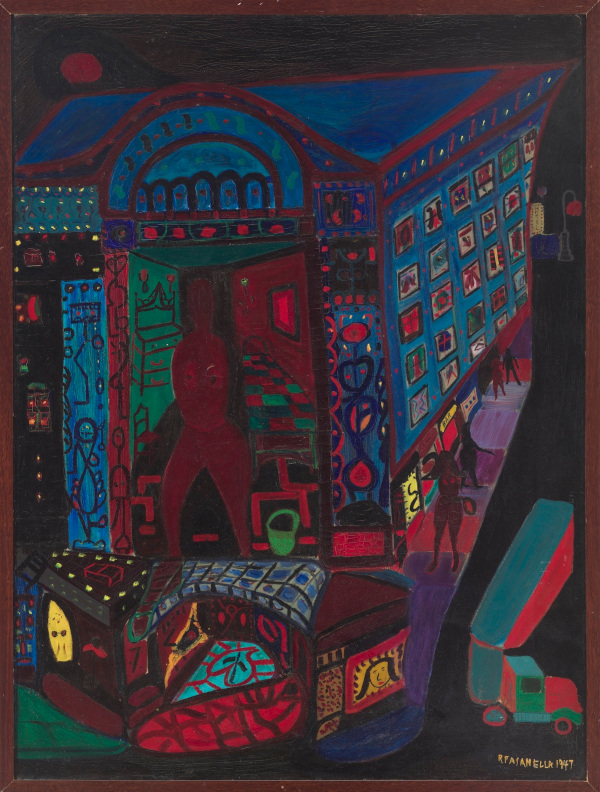
Nocturne, 1947.
The show also includes several early Fasanella paintings, from when he was still teaching himself to paint by “going to museums and looking at Picasso and Matisse,” as Ryan D. Ward, the owner and director of the Ruffed Grouse Gallery told me when I visited the gallery in January. While Fasanella was labeled as a “primitive” artist when he was discovered in the early 70s (he was featured on the cover of New York magazine with the headline “This man pumps gas in the Bronx for a living. He may also be the best primitive painter since Grandma Moses.”), he actually took the time to both study art history and immerse himself in modern art. Nocturne, from 1947, demonstrates this clearly, with bold, contrasting colors, abstract figures like those of Matisse’s famous Icarus, and a semi truck turned at an impossible angle, reminiscent of Marc Chagall’s Birthday but locating the painting firmly in working-class New York.
However, perhaps the most fascinating painting in the show, and one of only a very few of Fasanella’s large-scale paintings that is not currently owned by an institution or a private collection, is the massive and magnificent Love Goddess. Painted in 1964, it depicts a religious service of sorts, but one that would probably shock most church leaders — it is devoted to romantic and sexual love. The service occurs outdoors, where groups of young people lounge on a grassy lawn. Even in the early days of “the sixties” Fasanella, ever a keen observer of the diversity of the working class, was alive to, and interested in, the cultural changes taking place among young people.
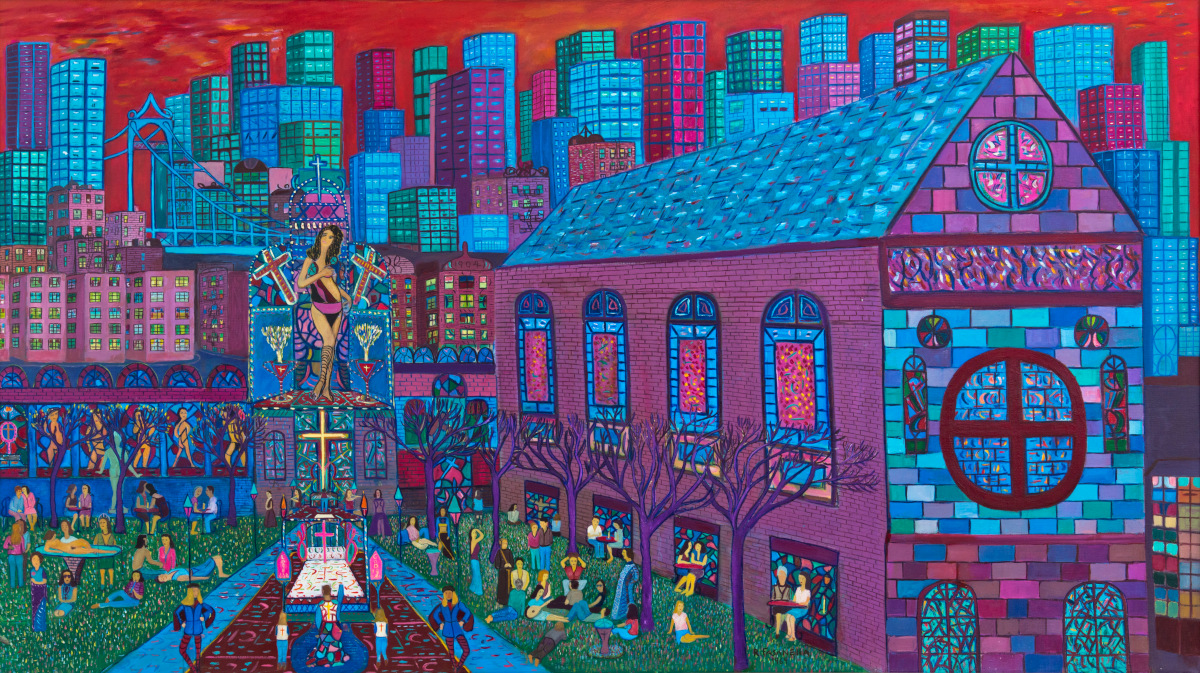
Love Goddess, 1964.
Historian Joshua B. Freeman writes in his 2000 book Working-Class New York that in the middle of the 20th century “the New York labor movement led the city toward a social democratic polity unique in the country,” one “committed to … popular access to culture and education.” Ralph Fasanella, one of our country’s great artists, was a product not only of his own genius but of that effort to create a city of, by, and for working people, a city that believed in the potential of every one of its residents. Fasanella believed in them all too.
- Seen: Six Decades of Ralph Fasanella Paintings will be on display at the Ruffed Grouse Gallery in Narrowsburg, New York through April 6. Ruffed Grouse will also be exhibiting Fasanella paintings, alongside those of other artists, at the Outsider Art Fair in New York City from February 27 to March 2.
- Also see “Remembering Ralph Fasanella, UE Organizer and Painter of Working-Class Life and Struggle” from the Winter 2023 issue of the UE NEWS.
All images courtesy The Ruffed Grouse Gallery and the Estate of Ralph Fasanella.

